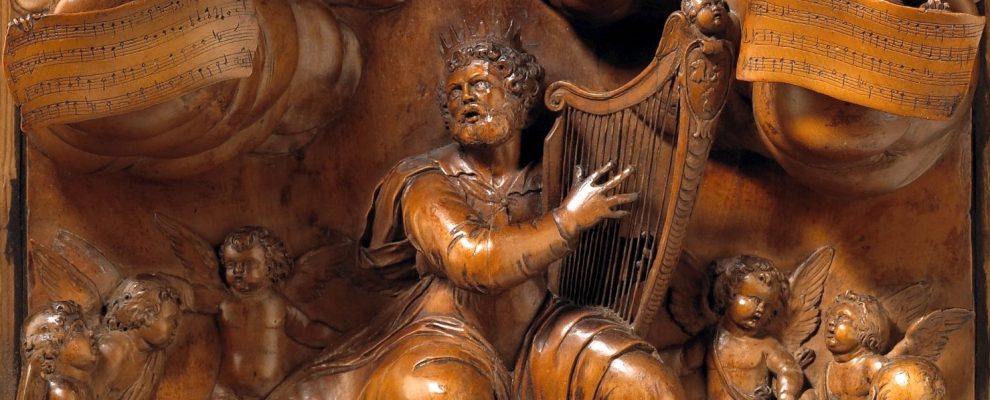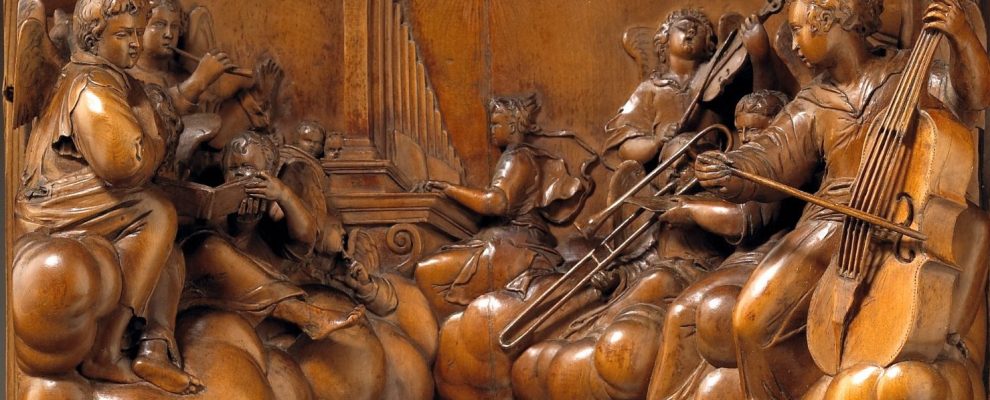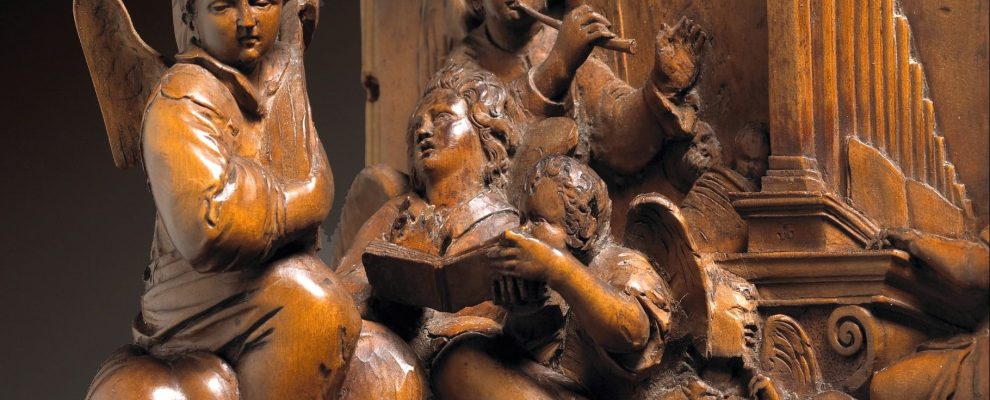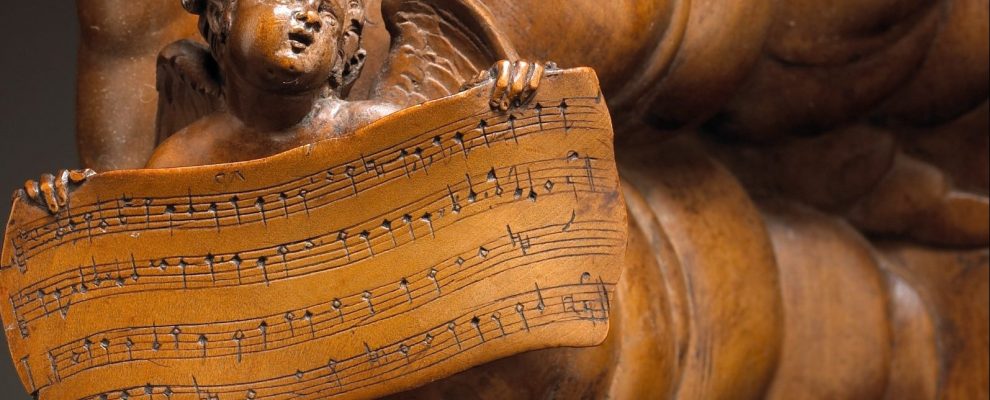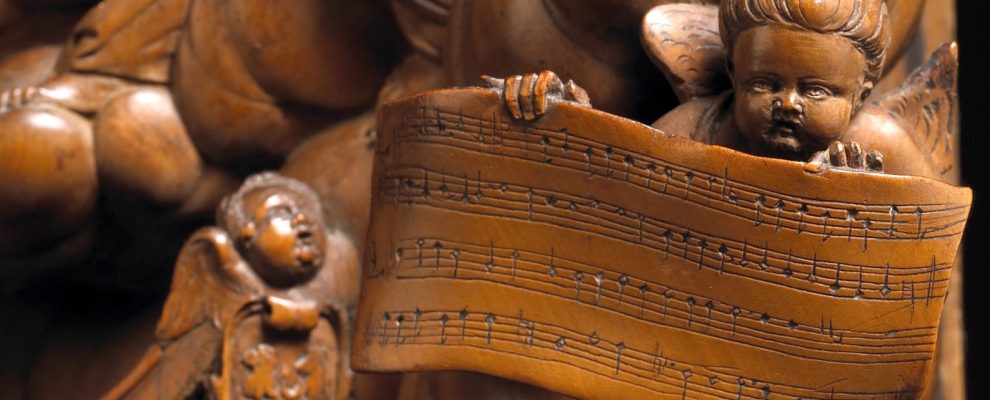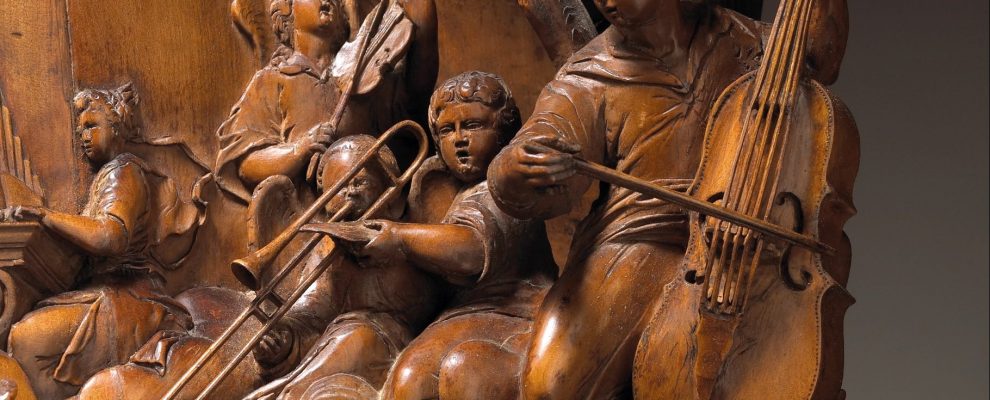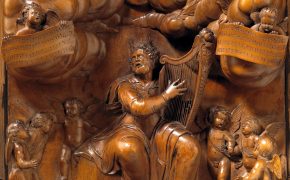King David & the Fairfaxes
In this work, Gibbons copied Candid’s painting in detail except for the cartouche on David’s harp which he altered not to carry the arms of Bavaria as in the painting and print, but the coat of arms of the Barwick family (three bears’ heads). This design and subject matter of the King David Panel clearly marks the object’s familial provenance and its strong connection to the Yorkshire Barwick and Fairfax families. Although further research is needed, from its date of production (at some point before Gibbons moved from York to London c1670), it seems highly likely that this panel was commissioned as a memorial piece by the widowed wife of Sir Robert Barwick for her son who died tragically in 1666 marking the end of the Barwick line and the beginning of the Fairfax lineage. Indeed, having recently lost her son, the last male heir in the Barwick line, the Gibbons panel may have presented Ursula Barwick with a fitting and poignant way to record for posterity the family’s wealth, artistic taste and religious fervour.
It is possible that Ursula may have met Gibbons when she moved into the Dowager Lodge at Toulston Hall, near Tadcaster, (after the hall passed to the Fairfax Family via her daughter’s inheritance). It seems possible she could have employed leading architect John Etty to oversee renovations and thereby come in to contact with the young Gibbons. Indeed, having recently lost her son, the last male heir in the Barwick line, the Gibbons panel may have presented her with a fitting and poignant way to record for posterity the family’s wealth, artistic taste and religious fervour. Equally possible is that Francis Fairfax (nee Barwick) commissioned the piece from Gibbons to similarly record her family’s lineage and the end of the male line.
Whatever its precise origin, the work was almost certainly in the collection of the Fairfax Family, where it appears to have acted as a catalyst for other equally magnificent commissions in stained glass on the same theme. Sir Robert and Lady Barwick’s daughter and heir, Frances (1655-1684), married Henry Fairfax, 4th Lord Fairfax (1631-88). Their son, Thomas Fairfax, 5th Lord Fairfax (1657-1710), appears to have been likewise particularly inspired by the imagery found in Candid’s painting, commissioning two stained glass windows on the subject by the leading glass painter Henry Gyles (1645-1709): one in c1700 for St Helen’s Church, at Denton and one for his property at Nun Appleton (which is now located at Womersley Hall). The Denton window bears the armorial of Lord Fairfax, and is signed and dated 1700, and the Womersley Hall window incorporates the same armorials of the Barwick family seen on Gibbons’ King David relief.

